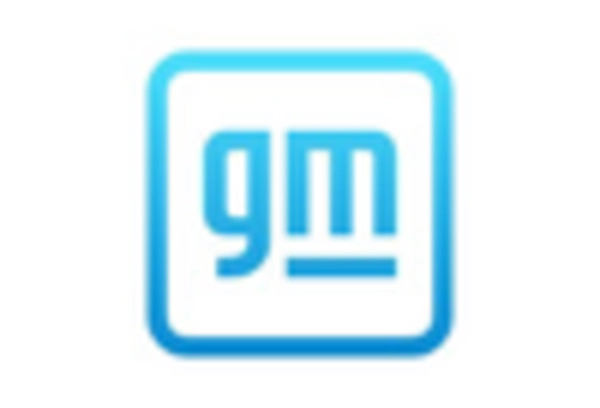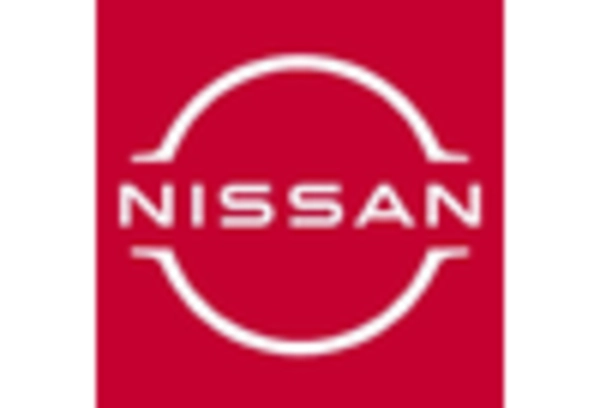Expansion of Charging Infrastructure
The expansion of charging infrastructure is a crucial factor influencing the Automotive Traction Motor Market. As more charging stations become available, the practicality of owning electric vehicles increases, leading to higher adoption rates. This infrastructure development is essential for alleviating range anxiety among consumers, which has historically hindered electric vehicle sales. In 2025, it is projected that the number of charging stations will continue to grow, further supporting the electric vehicle market. Consequently, this growth in charging infrastructure will drive demand for traction motors, as more consumers transition to electric vehicles, thereby enhancing the Automotive Traction Motor Market.
Growing Demand for Energy Efficiency
The increasing emphasis on energy efficiency is a significant driver for the Automotive Traction Motor Market. As fuel prices fluctuate and environmental concerns mount, both consumers and manufacturers are seeking solutions that enhance energy efficiency. Traction motors that offer higher efficiency ratings not only reduce operational costs for consumers but also contribute to lower emissions. In 2025, the market is likely to see a heightened focus on developing traction motors that optimize energy use, thereby aligning with global sustainability goals. This demand for energy-efficient solutions is expected to stimulate innovation and competition among manufacturers in the Automotive Traction Motor Market.
Government Regulations and Incentives
Government regulations and incentives play a pivotal role in shaping the Automotive Traction Motor Market. Many countries are implementing stringent emission standards and offering financial incentives for electric vehicle purchases. These policies encourage consumers to opt for electric vehicles, thereby increasing the demand for traction motors. In 2025, it is anticipated that various regions will continue to enhance their regulatory frameworks, further promoting the adoption of electric vehicles. This regulatory environment compels manufacturers to invest in research and development to produce compliant and efficient traction motors, ultimately fostering growth within the Automotive Traction Motor Market.
Increase in Electric Vehicle Adoption
The surge in electric vehicle adoption is a primary driver for the Automotive Traction Motor Market. As consumers increasingly prioritize sustainability and fuel efficiency, the demand for electric vehicles continues to rise. In 2025, it is estimated that electric vehicles will account for a substantial percentage of new car sales, leading to a corresponding increase in the need for efficient traction motors. This shift is not merely a trend but a fundamental change in consumer behavior, influenced by environmental concerns and government incentives. Consequently, manufacturers are compelled to innovate and enhance their traction motor technologies to meet the growing demand, thereby propelling the Automotive Traction Motor Market forward.
Technological Innovations in Motor Design
Technological advancements in motor design are significantly influencing the Automotive Traction Motor Market. Innovations such as improved materials, enhanced cooling systems, and advanced control algorithms are enabling the development of more efficient and powerful traction motors. For instance, the introduction of permanent magnet synchronous motors has shown to increase efficiency levels, which is crucial for electric vehicles. As manufacturers strive to enhance performance while reducing weight and size, the market is witnessing a shift towards more compact and efficient designs. This trend not only meets consumer expectations but also aligns with regulatory standards aimed at reducing emissions, thus driving growth in the Automotive Traction Motor Market.

















Leave a Comment